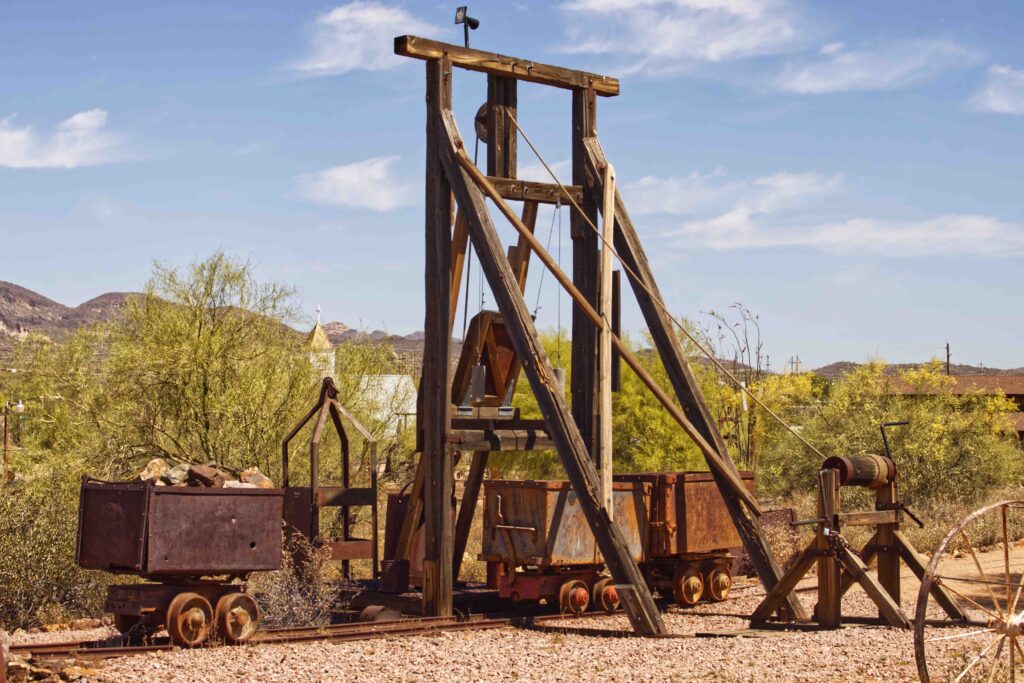Mining History
The Superstition Mountain Mining Company (SMMC)
No, we’re not really a mining company. That’s just the name we use for the group of mining exhibits that you’ll experience when you visit the museum.
Follow the Process. When you visit, follow the hard rock mining process from mine to bullion. A map is available in the gift shop and signage along the path explains the stages.
The SMMC Mine – The source of the ore

The Arastra – A truly ancient ore mill

The Assay Office – The miners map to success

Assay is the procedure used to measure the amount of valuable metal contained in ore. The assay office, located down the street from the Cossak mill, is a replica of a typical assay office that would have been associated with the Cossak mill. It houses all the period tools that would have been used and signage that takes the visitor through the process from receipt of samples to the final calculation of gold and silver content. A docent is sometimes on hand.
The 20-Stamp Cossak Stamp Mill – The heart of the process

A stamp mill is a large mechanical device, essentially a monster mortar and pestle. It uses lift-and-fall motion of heavy steel stamps to reduce the size of the ore (rock containing valuable metals) it is fed, to a fine sand which is transported out of the mortar box as a slurry through screens. The milling exposes the valuable metal (usually gold or silver) allowing its recovery by amalgamation with mercury or dissolution with cyanide as was done at the Cossak mill.
The Cossak operates in season from November to April, currently running Saturdays at 11:30 until the end of season on April 26th. Bring the family and experience what the millmen in 1914 felt every day.
The SMMC Mine Office – Where the business was done


